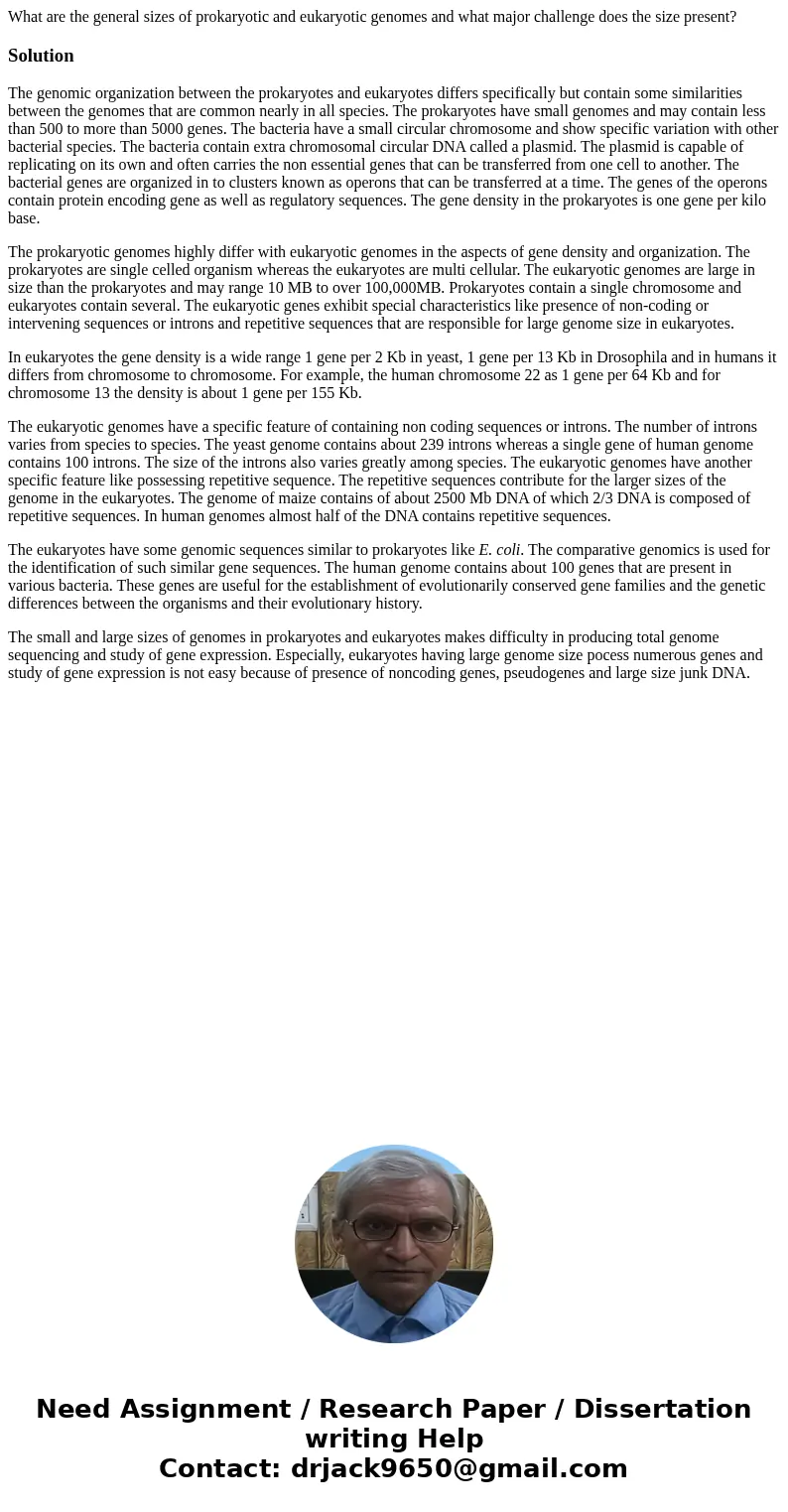What are the general sizes of prokaryotic and eukaryotic gen
What are the general sizes of prokaryotic and eukaryotic genomes and what major challenge does the size present?
Solution
The genomic organization between the prokaryotes and eukaryotes differs specifically but contain some similarities between the genomes that are common nearly in all species. The prokaryotes have small genomes and may contain less than 500 to more than 5000 genes. The bacteria have a small circular chromosome and show specific variation with other bacterial species. The bacteria contain extra chromosomal circular DNA called a plasmid. The plasmid is capable of replicating on its own and often carries the non essential genes that can be transferred from one cell to another. The bacterial genes are organized in to clusters known as operons that can be transferred at a time. The genes of the operons contain protein encoding gene as well as regulatory sequences. The gene density in the prokaryotes is one gene per kilo base.
The prokaryotic genomes highly differ with eukaryotic genomes in the aspects of gene density and organization. The prokaryotes are single celled organism whereas the eukaryotes are multi cellular. The eukaryotic genomes are large in size than the prokaryotes and may range 10 MB to over 100,000MB. Prokaryotes contain a single chromosome and eukaryotes contain several. The eukaryotic genes exhibit special characteristics like presence of non-coding or intervening sequences or introns and repetitive sequences that are responsible for large genome size in eukaryotes.
In eukaryotes the gene density is a wide range 1 gene per 2 Kb in yeast, 1 gene per 13 Kb in Drosophila and in humans it differs from chromosome to chromosome. For example, the human chromosome 22 as 1 gene per 64 Kb and for chromosome 13 the density is about 1 gene per 155 Kb.
The eukaryotic genomes have a specific feature of containing non coding sequences or introns. The number of introns varies from species to species. The yeast genome contains about 239 introns whereas a single gene of human genome contains 100 introns. The size of the introns also varies greatly among species. The eukaryotic genomes have another specific feature like possessing repetitive sequence. The repetitive sequences contribute for the larger sizes of the genome in the eukaryotes. The genome of maize contains of about 2500 Mb DNA of which 2/3 DNA is composed of repetitive sequences. In human genomes almost half of the DNA contains repetitive sequences.
The eukaryotes have some genomic sequences similar to prokaryotes like E. coli. The comparative genomics is used for the identification of such similar gene sequences. The human genome contains about 100 genes that are present in various bacteria. These genes are useful for the establishment of evolutionarily conserved gene families and the genetic differences between the organisms and their evolutionary history.
The small and large sizes of genomes in prokaryotes and eukaryotes makes difficulty in producing total genome sequencing and study of gene expression. Especially, eukaryotes having large genome size pocess numerous genes and study of gene expression is not easy because of presence of noncoding genes, pseudogenes and large size junk DNA.

 Homework Sourse
Homework Sourse